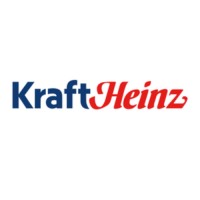Company Cyber Security Posture
NANA
NA Company Details
NA
NA
NA
NA
NA
NA
Scan still pending
NA
NA
Between 200 and 800
This score is AI-generated and less favored by cyber insurers, who prefer the TPRM score.
 NA Global Score
NA Global Score.png)

Company Scoring based on AI Models
| Model Name | Date | Description | Current Score Difference | Score |
|---|---|---|---|---|
| AVERAGE-Industry | 03-12-2025 | This score represents the average cybersecurity rating of companies already scanned within the same industry. It provides a benchmark to compare an individual company's security posture against its industry peers. | N/A | Between 200 and 800 |
Company Cyber Security News & History
| Entity | Type | Severity | Impact | Seen | Url ID | Details | View |
|---|
Company Subsidiaries

NA
Access Data Using Our API

Get company history
.png)
NA Cyber Security News
Cybersecurity breach at hedge fund manager Waratah may have exposed sensitive client data
Money manager told clients the incident may have impacted investor names, addresses, SINs, account numbers and other personal information.
Don’t fall for these 4 cybersecurity myths
Myth: Most hacking is the work of super genius computer nerds · Myth: Two-Factor Authentication Is a Waste of Time · Myth: VPNs Are Totally ...
Contract lapse leaves critical infrastructure cybersecurity sensor data unanalyzed at national lab
Data from sensors that detect threats in critical infrastructure networks is sitting unanalyzed after a government contract expired this weekend ...
Jim Cramer says buy these 2 cybersecurity stocks in the wake of Microsoft's attack
CNBC's Jim Cramer has long believed that cyber stocks are an essential part of investors' portfolios.
As AI tools take hold in cybersecurity, entry-level jobs could shrink
AI in cybersecurity is transforming team roles, reducing entry-level jobs while creating new opportunities and reshaping hiring priorities.
Agentic AI Turns Enterprise Cybersecurity Into Machine vs. Machine Battle
The first AI-driven preemptive cyber-defense has taken place. Now, corporate leaders may need to confront questions about agentic AI.
Exclusive Networks North America Signs with A10 Networks to Expand Cybersecurity Capabilities
A10's specialized network, application and AI security solutions target mid-market to enterprise organizations, including global enterprises, ...
Dwindling federal cyber support for critical infrastructure raises alarms
A plan to transfer cybersecurity and resilience responsibilities to states could have major unintended consequences.
'Cybersecurity incident' impacting Fort Smith Public Schools, all communication systems down
According to a Facebook post by Fort Smith Public Schools, the district has been impacted by a cybersecurity incident that took down phone ...

NA Similar Companies

Deshbandhu Group
Deshbandhu Group is a leading corporate house in Bangladesh. Deshbandhu Group is engaged in manufacturing and marketing of Refined Sugar, PP Woven Bag, Cement, Ship Management, Automatic Rice Milling, News Papers publications, Woven Sweater Manufacturing, Producing Power, Real Estate Development an

Compass Group
Compass Group PLC is a world leading food and support services company, which serves meals to millions of people in c.35 countries and employs and engages more than 550,000 people globally. The Company specialises in providing food and a range of support services across the core sectors of Business

Kraft Heinz
The Kraft Heinz Company is one of the largest food and beverage companies in the world, with eight $1 billion+ brands and global sales of approximately $25 billion. We’re a globally trusted producer of high-quality, great-tasting, and nutritious foods for over 150 years. While Kraft Heinz is co-head

Ambev
Hey there! Welcome. Here at Ambev, there are lots of people and amazing projects beyond our labels! Let’s talk about that. We believe that having a big dream requires just the same effort as having a small one. That is why our big dream began back in the 1880s, with a team determined to make thi

Coca-Cola Consolidated
Coca-Cola Consolidated is the largest Coca-Cola bottler in the United States. Our Purpose is to honor God in all we do, serve others, pursue excellence, and grow profitably. For over 120 years, we have been deeply committed to the consumers, customers, and communities we serve and are passionate abo

Gruppo Serenissima Ristorazione
Il Gruppo Serenissima Ristorazione, realtà italiana leader nel settore della ristorazione commerciale e collettiva, con più di 10500 dipendenti, 14 società correlate, produce 50 milioni di pasti all’anno, arrivando ad un fatturato consolidato superiore a 530 milioni di Euro. Uno dei tratti dist

Frequently Asked Questions
Explore insights on cybersecurity incidents, risk posture, and Rankiteo's assessments.
NA CyberSecurity History Information
How many cyber incidents has NA faced?
Total Incidents: According to Rankiteo, NA has faced 0 incidents in the past.
What types of cybersecurity incidents have occurred at NA?
Incident Types: The types of cybersecurity incidents that have occurred include .
Additional Questions
What Do We Measure?
















Every week, Rankiteo analyzes billions of signals to give organizations a sharper, faster view of emerging risks. With deeper, more actionable intelligence at their fingertips, security teams can outpace threat actors, respond instantly to Zero-Day attacks, and dramatically shrink their risk exposure window.
These are some of the factors we use to calculate the overall score:
Identify exposed access points, detect misconfigured SSL certificates, and uncover vulnerabilities across the network infrastructure.
Gain visibility into the software components used within an organization to detect vulnerabilities, manage risk, and ensure supply chain security.
Monitor and manage all IT assets and their configurations to ensure accurate, real-time visibility across the company's technology environment.
Leverage real-time insights on active threats, malware campaigns, and emerging vulnerabilities to proactively defend against evolving cyberattacks.




